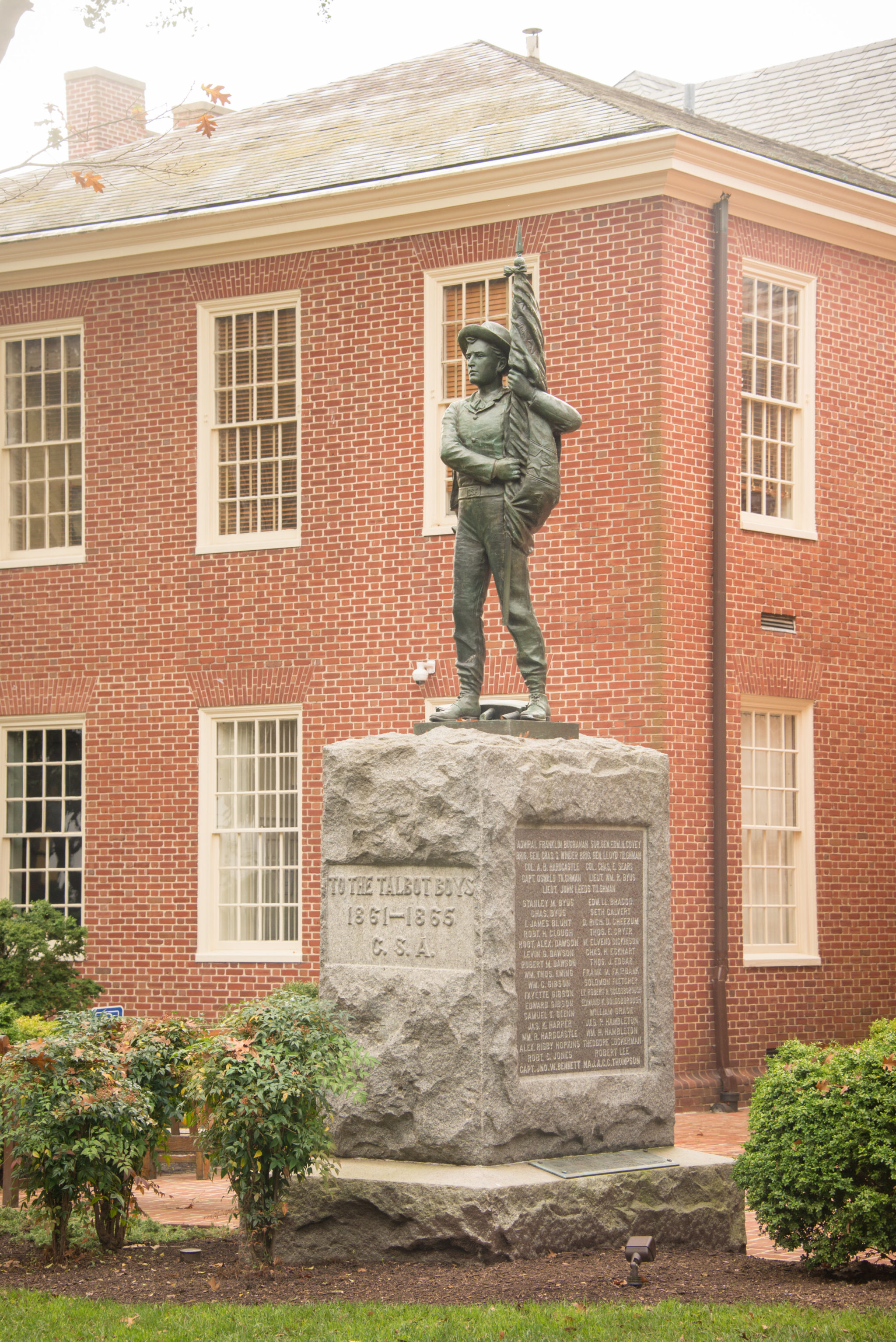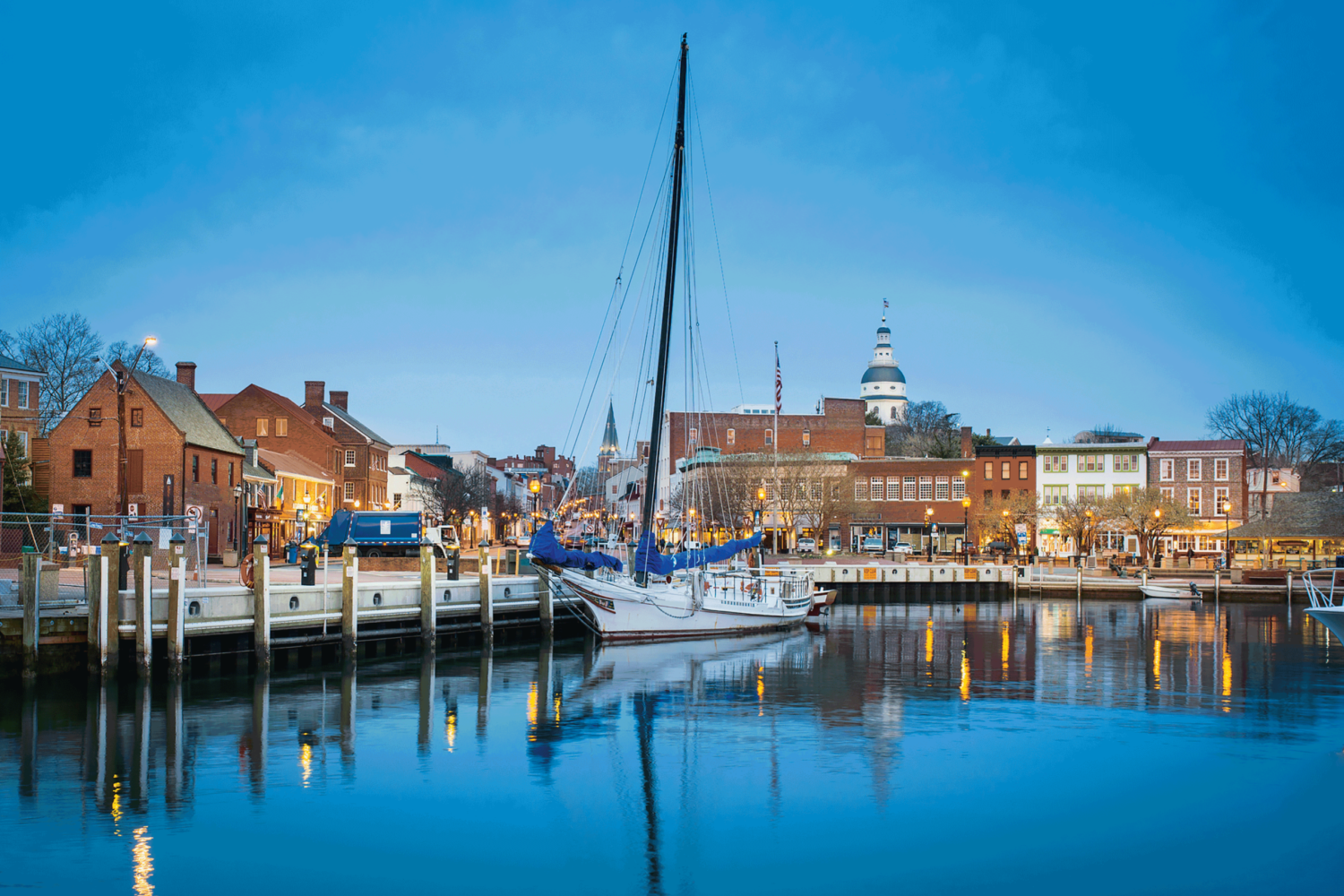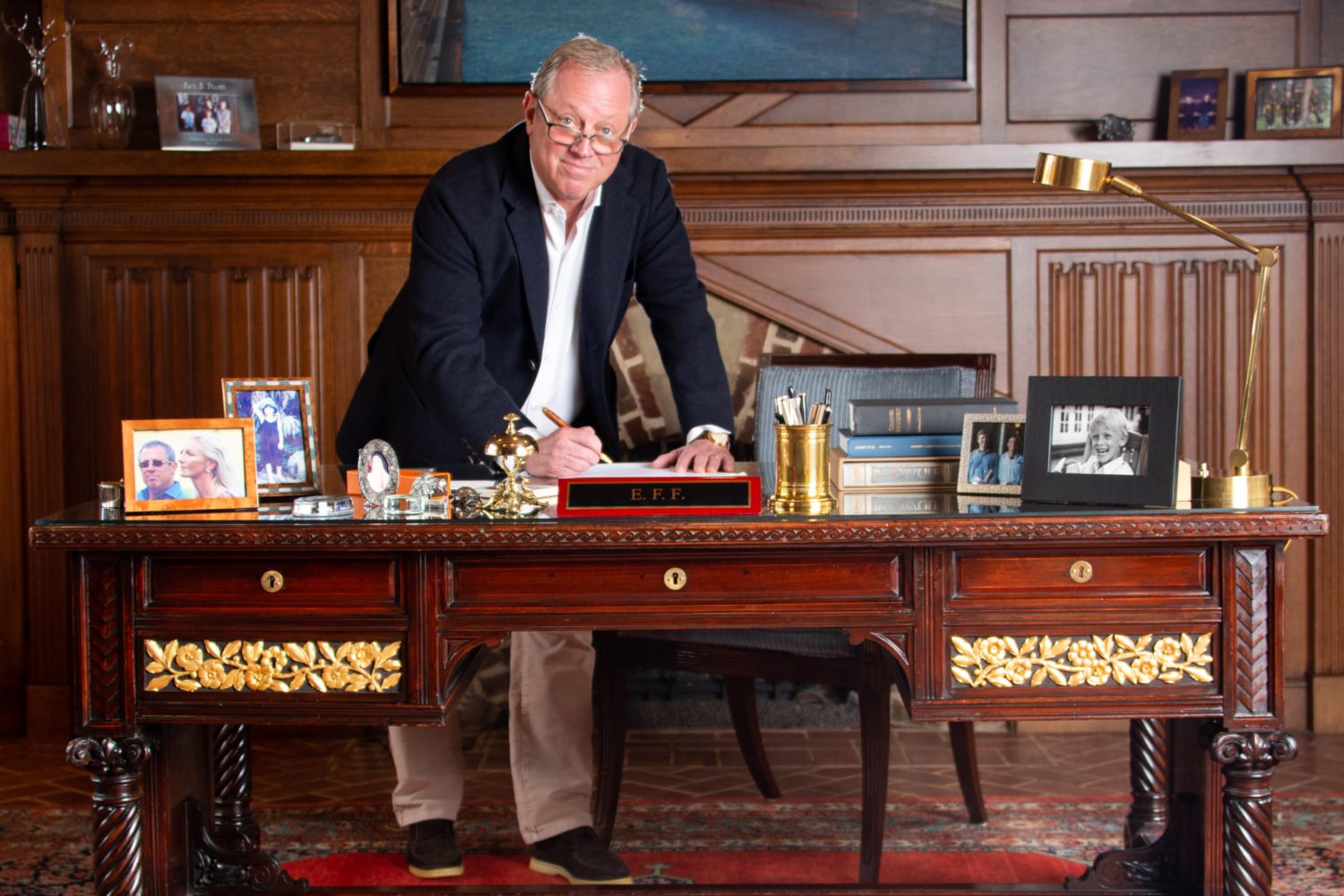The last remaining Confederate monument on Maryland public land will be taken down after a vote this week by the Talbot County council. The 105-year old “Talbot Boys” statue, depicts a young soldier holding a Confederate battle flag. Its podium lists names of the county’s soldiers who fought on behalf of the Confederacy in the Civil War.
The statue, which sits outside the historic courthouse in Easton, Maryland, has been a contentious presence as similar monuments to the Confederacy have been removed across the country. Just last August, in the wake of racial justice protests following George Floyd’s killing, the council voted narrowly to keep the Eastern Shore monument standing in a 3-2 vote.
This week’s tally to relocate the statue to Cross Keys Battlefield, a private park in Harrisonburg, Virginia, was equally close, also at 3-2. The vote came amidst an ongoing federal lawsuit filed by the Talbot NAACP in May to remove the statue, alleging the ongoing placement of a Confederate monument on the courthouse lawn is “unconstitutional and illegal.” Last week, the country’s largest remaining Confederate statue—a 13-foot monument of Robert E. Lee—was removed in Richmond, Virginia. Maryland Senator Chris Van Hollen (D) applauded the Talbot Boys’ dismissal in a statement that highlighted the significance of its Jim Crow-era placement outside the courthouse, calling it “a stain on justice.”
Still, there are some in Talbot Country who openly object to the removal of the statue, which was erected 50 years after the Civil War. Yard and road signs posted around the picturesque Eastern Shore town and its neighbor, St. Michaels, call to “Preserve Talbot History.” The Washington Post documented the scene in Easton during a public comment period where some residents voiced anger and frustration over a decision that they deemed an “erasure of history.”
Once the Talbot Boys statue is removed, a lone prominent figure will remain in Easton’s historic courtyard: a bronze depiction of Frederick Douglass, the area’s most famous native son. In 1878, the abolitionist leader, by then an elder statesman, returned to town and gave his “Self-Made Men” speech to a segregated audience in the courthouse. The statue was erected in 2011 as a way to honor Douglass—and some residents say, serve as a foil to the Talbot Boys.

















